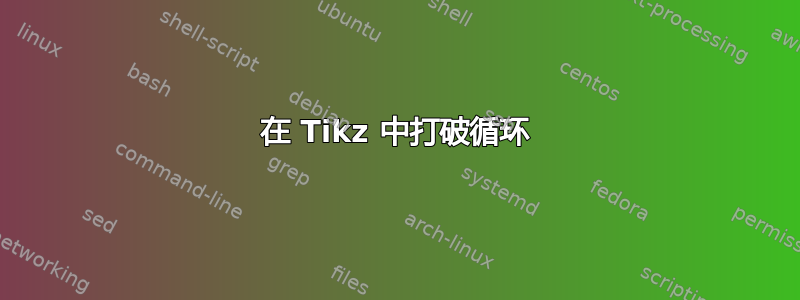
\documentclass{article}
\usepackage{tikz}
\begin{document}
\foreach \N in {8}
{\begin{tikzpicture}[scale=1.2,declare function={f(\x)=((1/3)*(\x)^(3)-3*
(\x)^(2)+8*\x-3;},
lnode/.style={fill=white,font=\normalsize,inner sep=0pt,text height=1.5em}]
\pgfmathtruncatemacro{\M}{1}
\coordinate (start) at (.8,{f(.8)});
\foreach \X [remember=\X as \LastX (initially 0)] in {1,2,3,4,...,8}
\ifnum\X<5
{\draw[fill=orange!40!white] (1+\LastX*4/\N,0) rectangle (1+\X*4/\N,{f(1+\LastX*4/\N)});
\draw[red,fill=red] (1+\LastX*4/\N,{f(1+\LastX*4/\N)}) circle (1.4pt) ;
\path (1+\LastX*4/\N,0pt) coordinate (x\X);
\ifnum\X=1
\draw (1+\LastX*4/\N,3pt) -- (1+\LastX*4/\N,0pt) coordinate (x\X)
node[anchor=north east,xshift=2pt,lnode] {$a=x_{\X}$};
\else
\pgfmathtruncatemacro{\itest}{mod(\X,\M)}
\ifnum\itest=0
\pgfmathsetmacro{\dist}{4-\LastX*4/\N}
\ifdim\dist cm>5pt
\draw (1+\LastX*4/\N,3pt) -- (1+\LastX*4/\N,0pt)
node[anchor=north,lnode] {$x_{\X}$};
\else
\ifnum\X=8
\fi
\fi
\fi
\fi
\fi
}
\draw (5,3pt) -- (5,0pt)
node[anchor=north west,xshift=-2pt,lnode]{$b$};
%\draw (1,3pt) -- (1,0pt)
% node[anchor=north west,xshift=-2pt,lnode]{$a$};
\node at (5.3,5) [text=red] {$f(x)$};
\coordinate (end) at (5.05,{f(5.05)});
\draw (5,3pt) -- (5,0pt) node[anchor=north west,xshift=-2pt,lnode]{$b$};
\draw (5,0)--(5,{f(5)});
\draw [-latex] (-0.5,0) -- (6,0) node (xaxis) [below] {$x$};
\draw [-latex] (0,-0.5) -- (0,5) node [left] {$y$};
\draw[domain=.5:5.3,samples=200,variable=\x,red,<->,thick] plot ({\x},{f(\x)});
\node at (5.3,5) [text=red] {$f(x)$};
\end{tikzpicture}}
\end{document}
这会产生错误但输出:
我正在尝试使用 Marmot 编写的现有程序来创建
答案1
你想要这样的东西吗?
\documentclass{article}
\usepackage{tikz}
\begin{document}
\foreach \N in {8}
{\begin{tikzpicture}[scale=1.2,declare function={f(\x)=((1/3)*(\x)^(3)-3*
(\x)^(2)+8*\x-3;},
lnode/.style={fill=white,font=\normalsize,inner sep=0pt,text height=1.5em}]
\pgfmathtruncatemacro{\M}{1}
\coordinate (start) at (.8,{f(.8)});
\foreach \X [remember=\X as \LastX (initially 0)] in {1,2,3,4,...,\N}
{\ifnum\X<5 %<-level 1
\draw[fill=orange!40!white] (1+\LastX*4/\N,0) rectangle (1+\X*4/\N,{f(1+\LastX*4/\N)});
\draw[red,fill=red] (1+\LastX*4/\N,{f(1+\LastX*4/\N)}) circle (1.4pt) ;
\path (1+\LastX*4/\N,0pt) coordinate (x\X);
\ifnum\X=1 %<-level 2
\draw (1+\LastX*4/\N,3pt) -- (1+\LastX*4/\N,0pt) coordinate (x\X)
node[anchor=north east,xshift=2pt,lnode] {$a=x_{\X}$};
\else
\pgfmathtruncatemacro{\itest}{mod(\X,\M)}
\ifnum\itest=0 %<-level 3
\pgfmathsetmacro{\dist}{4-\LastX*4/\N}
\ifdim\dist cm>5pt %<-level 4
\draw (1+\LastX*4/\N,3pt) -- (1+\LastX*4/\N,0pt)
node[anchor=north,lnode] {$x_{\X}$};
\fi %<-level 4
\fi %<-level 3
\fi %<-level 2
\else
\ifnum\X=\N %<-level 2
\draw[fill=orange!40!white] (1+\LastX*4/\N,0) rectangle (1+\X*4/\N,{f(1+\LastX*4/\N)});
\draw[red,fill=red] (1+\LastX*4/\N,{f(1+\LastX*4/\N)}) circle (1.4pt) ;
\path (1+4*4/\N,{f(1+\LastX*4/\N)/2}) -- (1+\LastX*4/\N,{f(1+\LastX*4/\N)/2})
node[midway,font=\huge\bfseries]{\dots};
\fi %<-level 2
\fi %<-level 1
}
\draw (5,3pt) -- (5,0pt)
node[anchor=north west,xshift=-2pt,lnode]{$b$};
%\draw (1,3pt) -- (1,0pt)
% node[anchor=north west,xshift=-2pt,lnode]{$a$};
\node at (5.3,5) [text=red] {$f(x)$};
\coordinate (end) at (5.05,{f(5.05)});
\draw (5,3pt) -- (5,0pt) node[anchor=north west,xshift=-2pt,lnode]{$b$};
\draw (5,0)--(5,{f(5)});
\draw [-latex] (-0.5,0) -- (6,0) node (xaxis) [below] {$x$};
\draw [-latex] (0,-0.5) -- (0,5) node [left] {$y$};
\draw[domain=.5:5.3,samples=200,variable=\x,red,<->,thick] plot ({\x},{f(\x)});
\node at (5.3,5) [text=red] {$f(x)$};
\end{tikzpicture}}
\end{document}





